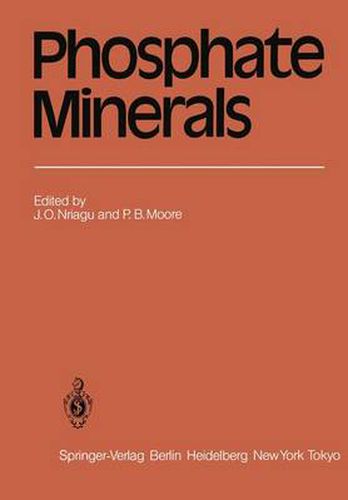Readings Newsletter
Become a Readings Member to make your shopping experience even easier.
Sign in or sign up for free!
You’re not far away from qualifying for FREE standard shipping within Australia
You’ve qualified for FREE standard shipping within Australia
The cart is loading…






This title is printed to order. This book may have been self-published. If so, we cannot guarantee the quality of the content. In the main most books will have gone through the editing process however some may not. We therefore suggest that you be aware of this before ordering this book. If in doubt check either the author or publisher’s details as we are unable to accept any returns unless they are faulty. Please contact us if you have any questions.
The literature on the geology, chemistry, and biochemistry of phosphorus generally takes its mineralogy for granted. The in cidental information on phosphate minerals given in these texts is often obsolescent and inaccurate. The few mineralogical texts that have dealt comprehensively with the phosphate minerals have now become outdated, and typically present the essential information in a manner unsuitable for nongeological readers. This volume is intended as a ready reference for workers who require good basic information on phosphate minerals or their synthetic equivalents. The topics covered should appeal to geologists and geochemists, lithologists, environmental scientists and engineers, chemists and biochemists who have any interest in the intricate world of phosphorus. The hard tissues of many vertebrates and the many pathological calcifications consist mostly of phosphate minerals. The precipita tion of these compounds also plays a major role in the ecological cycling of phosphorus, and occasionally even dominates the behavior of many trace metals in many geochemical and biolog ical systems. Indeed, many pegmatitic phosphate minerals have acquired some notoriety because of the rarer trace metals which they tend to accumulate. With the commercialization of phosphate fertilizers since the early part of the 19th century, phosphate minerals have assumed an important role in industrial chemistry and agriculture. Clearly, the study of phosphate minerals is important from the economic, agricultural, environmental and (human and animal) health viewpoint.
$9.00 standard shipping within Australia
FREE standard shipping within Australia for orders over $100.00
Express & International shipping calculated at checkout
Stock availability can be subject to change without notice. We recommend calling the shop or contacting our online team to check availability of low stock items. Please see our Shopping Online page for more details.
This title is printed to order. This book may have been self-published. If so, we cannot guarantee the quality of the content. In the main most books will have gone through the editing process however some may not. We therefore suggest that you be aware of this before ordering this book. If in doubt check either the author or publisher’s details as we are unable to accept any returns unless they are faulty. Please contact us if you have any questions.
The literature on the geology, chemistry, and biochemistry of phosphorus generally takes its mineralogy for granted. The in cidental information on phosphate minerals given in these texts is often obsolescent and inaccurate. The few mineralogical texts that have dealt comprehensively with the phosphate minerals have now become outdated, and typically present the essential information in a manner unsuitable for nongeological readers. This volume is intended as a ready reference for workers who require good basic information on phosphate minerals or their synthetic equivalents. The topics covered should appeal to geologists and geochemists, lithologists, environmental scientists and engineers, chemists and biochemists who have any interest in the intricate world of phosphorus. The hard tissues of many vertebrates and the many pathological calcifications consist mostly of phosphate minerals. The precipita tion of these compounds also plays a major role in the ecological cycling of phosphorus, and occasionally even dominates the behavior of many trace metals in many geochemical and biolog ical systems. Indeed, many pegmatitic phosphate minerals have acquired some notoriety because of the rarer trace metals which they tend to accumulate. With the commercialization of phosphate fertilizers since the early part of the 19th century, phosphate minerals have assumed an important role in industrial chemistry and agriculture. Clearly, the study of phosphate minerals is important from the economic, agricultural, environmental and (human and animal) health viewpoint.